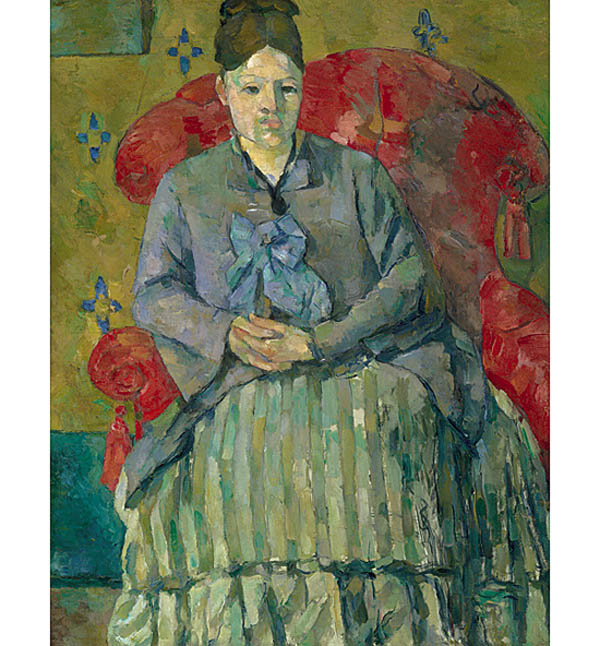The First Exhibition Of Cezanne's Portraits Of His Wife, Hortense Fiquet, Is Being Held At The Metropolitan Museum Of Art
The exhibition is made possible by The Florence Gould Foundation. It is supported by an indemnity from the Federal Council on the Arts and the Humanities.
Madame Cézanne will feature 24 of the 29 known portraits of Hortense that Cézanne painted over a period of more than 20 years, including Madame Cézanne in the Conservatory (1891) and Madame Cézanne in a Red Dress (1888-90), both from the Metropolitan Museum's collection. Hortense posed for Cézanne more often than anyone but himself. The exhibition will consider their partnership in all its facets and complexities, the portraits of Hortense in oil, watercolor, and graphite providing the only material clues to that partnership. And yet, the paintings can seem unforgiving, with little understanding of Hortense Fiquet's character. Critics have cited her sour expression and remote, impenetrable demeanor. These unflattering observations have promoted Hortense's undeserved reputation.
Cézanne met Hortense in Paris in 1869 while she was working as a bookbinder. Although the circumstances of their first encounter are unknown, an early portrait from 1872 suggests that she was modeling for Cézanne by the age of 22. Cézanne took great pains to conceal his mistress and their only child, Paul, from his family, fearing his authoritative father's disapproval. The complicated subterfuge led to separate residences, frequent and often desperate appeals for funds, and long periods of living apart, even after their marriage in 1886. Despite this seeming neglect, the portraits attest to the constancy of a relationship that was critical to the artist's practice and development. Their story is a compelling one, perhaps all the more so for the absence of its particulars.
Highlights of the painted portraits in Madame Cézanne will include Madame Cézanne in a Red Armchair (ca. 1877) from the Museum of Fine Arts, Boston; Madame Cézanne (ca. 1885) from the private collection on loan to Staatliche Museen zu Berlin, Nationalgalerie, Museum Berggruen in Berlin; Portrait of Madame Cézanne (ca. 1885-87) from the Philadelphia Museum of Art; Portrait of Madame Cézanne in a Striped Dress (1883-85) from Japan's Yokohama Museum of Art; Madame Cézanne in Blue (ca. 1888-90) from the Museum of Fine Arts, Houston; and the aforementioned canvases from the Metropolitan Museum's collection. Highlights of the works on paper will include three striking watercolors, 14 drawings, and three rare sketchbooks bearing affectionate studies of Hortense and young Paul.
Exhibition Credits
Madame Cézanne is organized by Dita Amory, acting associate curator in charge and administrator of the Robert Lehman collection at The Metropolitan Museum of Art, with Kathryn Kremnitzer, research assistant.
Publication
The exhibition will be accompanied by a catalogue written by a team of scholars and edited by Dita Amory. It will be published by The Metropolitan Museum of Art and distributed by Yale University Press.
The catalogue is made possible by The Florence Gould Foundation.
Related Programs
Obsession, a performance by the Metropolitan Museum's Quartet in Residence, the Attacca Quartet, will take place on Friday, Feb. 6, 2015, and will draw inspiration from the exhibition.
Additional information about the exhibition and its accompanying programs are available at www.metmuseum.org. The MET is located 1000 Fifth Ave. in New York City.






